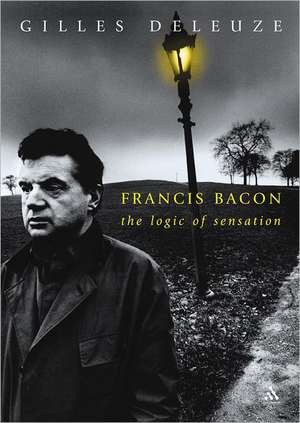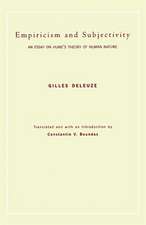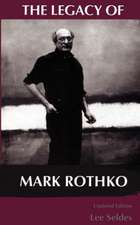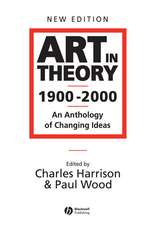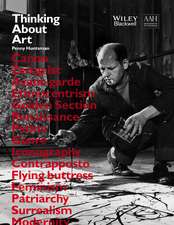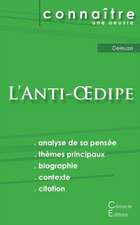Francis Bacon: The Logic of Sensation
Autor Gilles Deleuze Traducere de Daniel W. Smithen Limba Engleză Hardback – 21 apr 2003
| Toate formatele și edițiile | Preț | Express |
|---|---|---|
| Paperback (2) | 125.75 lei 24 ore | |
| Bloomsbury Publishing – 18 oct 2017 | 125.75 lei 24 ore | |
| University of Minnesota Press – 25 mai 2005 | 139.34 lei 3-5 săpt. | +11.40 lei 6-12 zile |
| Hardback (1) | 531.96 lei 6-8 săpt. | |
| Bloomsbury Publishing – 21 apr 2003 | 531.96 lei 6-8 săpt. |
Preț: 531.96 lei
Preț vechi: 780.26 lei
-32% Nou
Puncte Express: 798
Preț estimativ în valută:
101.79€ • 106.49$ • 84.56£
101.79€ • 106.49$ • 84.56£
Carte tipărită la comandă
Livrare economică 03-17 aprilie
Preluare comenzi: 021 569.72.76
Specificații
ISBN-13: 9780826466471
ISBN-10: 0826466478
Pagini: 228
Dimensiuni: 138 x 216 x 16 mm
Greutate: 0.44 kg
Editura: Bloomsbury Publishing
Colecția Continuum
Locul publicării:London, United Kingdom
ISBN-10: 0826466478
Pagini: 228
Dimensiuni: 138 x 216 x 16 mm
Greutate: 0.44 kg
Editura: Bloomsbury Publishing
Colecția Continuum
Locul publicării:London, United Kingdom
Recenzii
"...manages to be both insightful and rigorous. A marriage made in pictorial hell.." -- Daily Telegraph
Caracteristici
Introduces some of Deleuze's best known concepts such as 'body without organs' and the 'diagram'.
Notă biografică
Gilles Deleuze (1925-1995) was one of the key figures in poststructuralism, and one of the most influential philosophers of the 20th century. His major works include, with Felix Guattari, A Thousand Plateaus and Anti-Oedipus, also published in the Bloomsbury Revelations series.
Cuprins
Translator's Preface, by Daniel W. Smith Preface to the French Edition, by Alain Badiou and Barbara Cassin Author's Foreword Author's Preface to the English Edition1. The Round Area, the RingThe round area and its analogues - Distinction between the Figure and the figurative - The fact - The question of "matters of fact" - The three elements of painting: structure, Figure, and contour - Role of the fields2. Note on Figuration in Past PaintingPainting, religion, and photography - On two misconceptions3. Athleticism First movement: from the structure to the Figure - Isolation - Athleticism - Second movement: from the Figure to the structure - The body escapes from itself: abjection - Contraction, dissipation: washbasins, umbrellas, and mirrors4. Body, Meat, and Spirit, Becoming-AnimalMan and animal - The zone of indiscernibility - Flesh and bone: the meat descends from the bone - Pity - Head, face, and meat5. Recapitulative Note: Bacon's Periods and AspectsFrom the scream to the smile: dissipation - Bacon's three successive periods - The coexistence of all the movements - The functions of the contour6. Painting and SensationCezanne and sensation - The levels of sensation - Figuration and violence - The movement of translation, the stroll - The phenomenological unity of the senses: sensation and rhythm7. HysteriaThe body without organs: Artaud - Worringer's Gothic line - What the "difference of level" in sensation means - Vibration - Hysteria and presence - Bacon's doubt - Hysteria, painting, and the eye8. Painting ForcesRendering the invisible: the problem of painting - Deformation: neither transformation nor decomposition - The scream - Bacon's love of life - Enumeration of forces9. Couples and TriptychsCoupled Figures - The battle and the coupling of sensation - Resonance - Rhythmic Figures - Amplitude and the three rhythms - Two types of "matters of fact"10. Note: What Is a Triptych?The attendant - The active and the passive - The fall: the active reality of the difference in level - Light, union and separation11. The Painting before Painting .. .Cezanne and the fight against the cliche - Bacon and photographs - Bacon and probabilities - Theory of chance: accidental marks - The visual and the manual - The status of the figurative12. The DiagramThe diagram in Bacon (traits and color-patches) - Its manual character - Painting and the experience of catastrophe - Abstract painting, code, and optical space - Action Painting, diagram, and manualspace - What Bacon dislikes about both these ways13. Analogy Cezanne: the motif as diagram - The analogical and the digital - Painting and analogy - Theparadoxical status of abstract painting - The analogical language of Cezanne and of Bacon: plane, color, and mass - Modulation - Resemblance recovered14. Every Painter Recapitulates the History of Painting in His or Her Own Way .. .Egypt and haptic presentation - Essence and accident - Organic representation and the tactileoptical world - Byzantine art: a pure optical world? - Gothic art and the manual - Light and color, the optic and the haptic15. Bacon's PathThe haptic world and its avatars - Colorism - A new modulation - From Van Gogh and Gauguin to Bacon - The two aspects of color: bright tone and broken tone, field and Figure, shores and flows .. .16. Note on ColorColor and the three elements of painting - Color-structure: the fields and their divisions - The role of black Color-force: Figures, flows, and broken tones Heads and shadows - Color-contour - Painting and taste: goodand bad taste17. The Eye and the Hand Digital, tactile, manual, and haptic - The practice of the diagram - On "completely different" relations - Michelangelo: the pictorial factIndex of Paintings Notes Index
